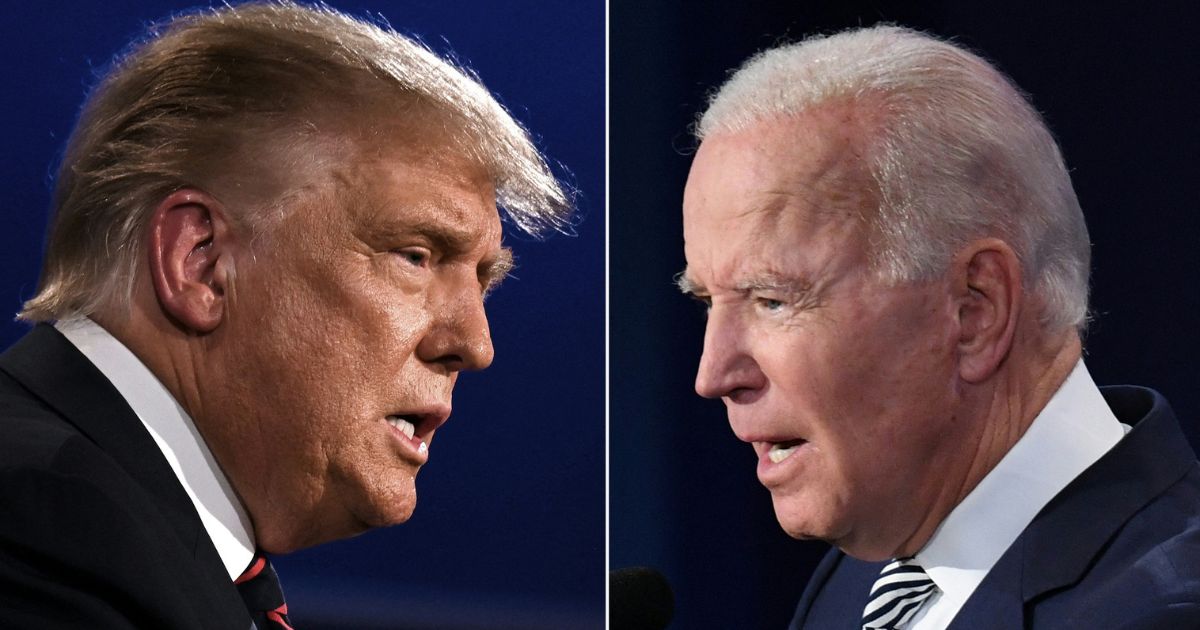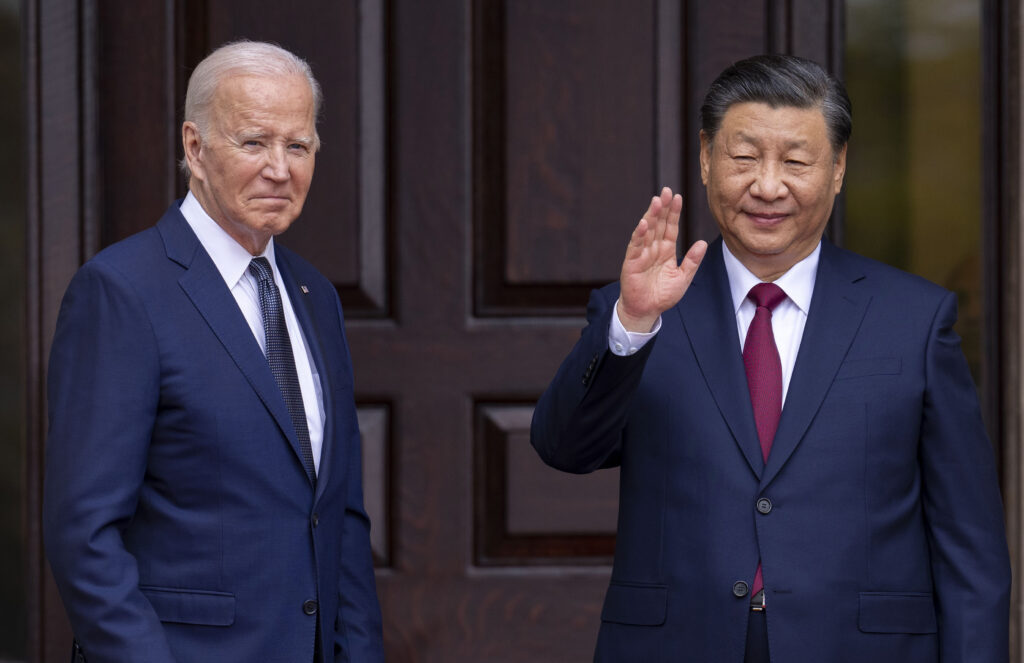Taiwan Has Five Years to Prepare for Invasion
TAIWAN HAS 5 YEARS TO PREPARE for a Chinese invasion if—a big if—U.S. fears prove true that Beijing may abandon its goal of “peaceful reunification” in 2027 and seize the island democracy of 23 million by force.
That’s been the hypothetical D-Day for a while, thanks to Navy Adm. Phil Davidson, who told the Senate last year that China’s ambitions are accelerating and “the threat is manifest during this decade” of a potential Taiwan play. “In fact, in the next six years.”
Add CIA Deputy Director David Cohen as another voice: He says Chinese President Xi Jinping has ordered his military “to have the capability to take control of Taiwan by force by 2027,” CNN reported, though Langley still thinks Xi wants to “get control through nonmilitary means.”
President Joe Biden has said four times now that the United States will defend Taiwan from attack—Chinese protests and “strategic ambiguity” be damned—so the question now is what is being done to deter it?
It’s unclear whether China will invade Taiwan in 2027, 2049, or ever. But the U.S. undoubtedly prefers the status quo. An autonomous Taiwan and free-flowing Taiwan Strait are better for global stability.
Nevertheless, military planners must prepare for crises anyway. And while five years seems distant, U.S. weapons being used now to defend Ukraine are needed to bolster Taiwan—but US stockpiles have dwindled and will take years to rebuild.
Unlike Ukraine—with porous borders ripe for foreign weapons shipments and aid—Taiwan will be “very hard to arm” during a conflict, says Blake Herzinger, a Pacific security expert. The island sits about 100 miles east of China and is within range of its missiles—along with U.S. forces that would presumably respond from Japan and elsewhere in Asia.
“Self-propelled artillery and mobile cruise missile launchers are the types of equipment Taiwan should prioritize but has yet to incorporate into its defense forces,” Herzinger wrote recently in Foreign Policy.
Taiwan also needs a “large number of small things,” says retired Adm. Lee Hsi-min, former chief of the Taiwan General Staff from 2017 to 2019 and planner of the island’s defense. These things include intelligence, surveillance, and reconnaissance systems and counter-ISR; small precision weapons that can be concealed from missile attack; anti-air weapons to keep aircraft at bay; and other munitions that can inflict massive pain on invaders close to shore.
“If we want to survive, and if we want to successfully defend ourselves, we must change,” Lee said in July. “This is a matter of life and death.”
There are, of course, acute diplomatic issues at play. Helping Taiwan angers Beijing. And if Taipei claims independence, full-scale invasion is virtually assured. But there is another prospect U.S. planners are starting to worry about: a blockade or “quarantine” by China that would complicate a response.
“They have a very large navy, and if they want to bully and put ships around Taiwan, they very much can do that,” says Navy Vice Adm. Karl Thomas, U.S. 7th Fleet commander. “Clearly if they do something that’s non-kinetic, which, you know, a blockade is less kinetic.”
According to a recent Rand study, China “would likely see quarantine” as a lower-risk option, explaining a block of shipping to Taiwan “as nothing more than an attempt to regulate trade as opposed to invasion and occupation.” But a Cuban Missile Crisis-style quarantine should not be viewed as low risk.
“The United States and its allies should view the possibility of a quarantine of Taiwan by the [People’s Republic of China] as a highly destabilizing course of action that could become dangerous very quickly,” the study says.
How it goes from there, according to Rand:
“Taiwan would be affected quickly, with the asymmetry between Taiwan and the PRC making Taiwan’s ability to function economically precarious. The United States would face a requirement to move forces close to the contested area, increasing vulnerability. Taiwan’s status as a supplier of components and high-technology items might in fact increase the world’s incentives to urge rapid resolution, while at the same time creating incentives for the PRC to seek domination over key industries. This would likely not be a slow-moving conflict but a rapidly escalating crisis.”
Contextualized intel, analysis, quotes, reports, docs, and original national security reporting you need on your radar:
-
🇷🇺 Russian President Vladimir Putin has escalated his war in Ukraine, ordering the immediate mobilization of 300,000 military reservists and again threatening the West with nukes. “This is not a bluff,” Putin said in a televised address, begging the question: What were all the previous nuclear threats, then?
-
Notably, the move “leaves discretion” to Russia’s military, says Pavel Chikov, a longtime human rights advocate in Russia. “The Ministry of Defense will form quotas for mobilization for each region of Russia. Governors will be responsible for their implementation.” This ostensibly lets Moscow pull cannon fodder from certain regions to conceal the full extent of mobilization—a closely-held state secret.
-
-
🇨🇳 The Chinese-owned TikTok app that’s wildly popular with U.S. military service members (and 1 billion+ others) is under greater scrutiny.
-
Aside from hosting Ukraine war footage and viral dance videos, TikTok’s ties to the Chinese Communist Party and a June revelation that U.S. user data “has been repeatedly accessed from China” has worried regulators, as evidenced by heated Senate questioning of TikTok COO Vanessa Pappas.
-
TikTok has pushed back on its Chinese government ties and pledged more transparency, but that arguably doesn’t matter. China has a law on the books allowing the state to “commission” individuals and organizations “to carry out” intelligence work. And when Beijing’s spies come knocking, according to the law,
they “may ask relevant institutions, organizations and citizens to provide necessary support, assistance, and cooperation.”
-
The Committee on Foreign Investment in the United States has been conducting a security review of the app since 2020. President Biden ordered “additional national security factors” for CFIUS security reviews on Sept. 15. Tech journalist Casey Newton suspects a potential TikTok sale “sooner or later” to avoid a ban.
-
Meanwhile, tech competition with China is sure to persist, but a “grim future” awaits the U.S. if it loses to China in chip development, 5G connectivity, and artificial intelligence, according to a special U.S. government-backed study. [PDF]
-
“If that world happens, it’s going to be very bleak for democracy…” says Robert Work, a former deputy defense secretary and advisor on the study. “China’s sphere of influence will grow as its technological platforms proliferate throughout the world, and they will be able to establish surveillance on a global scale. So that’s what losing looks like.”
-
Drone tech is also worth keeping an eye on, as noted in The Ruck earlier this month. Drones are proliferating and are altering warfare. They’ll also impact far more, with nearly 5,000 drone patents being granted in the last year. Nearly 70% are Chinese-owned.
-
-
🇺🇸 U.S. troops in northeast Syria were attacked on Sept. 18 with three 107mm rockets. A fourth rocket and launcher were found at the launch site 5 kilometers away, according to U.S. Central Command.
-
The Independent Review Commission on Sexual Assault in the Military will begin polling tens of thousands of troops as officials continue to evaluate and implement 80+ recommendations made by the commission in July.
-
The Pentagon ordered a “sweeping audit” of how the military conducts psychological operations online amid concerns about the trolling of America’s enemies in cyberspace.
-
⚓️ The trial of a Navy sailor accused of setting ablaze the USS Bonhomme Richard has begun in San Diego, California. Ryan Sawyer Mays is charged with the July 2020 fire that sent the $1.2 billion warship to the scrapyard. A Navy judge urged against taking Mays to trial due to lack of evidence. Prosecutors will likely rest on Friday, a Navy official told The Ruck.
-
The retirement of a former general of Fort Benning, Georgia, has been put on “pause” as the Army investigates alleged social media misconduct. Maj. Gen. Patrick Donahoe has been reassigned as a “special assistant” and is no longer in the retirement process. Donahoe did not respond to questions from The Ruck.
-
The USS Ronald Reagan visits Busan, South Korea, on Friday, marking the first visit of a U.S. aircraft carrier to the country since 2018.
-
The ship is in port for military drills to check North Korea, which has vexed 16 Congresses and six presidents, according to the tally in a new CRS update. According to CRS, Pyongyang “has ignored attempts” by the Biden administration and others to resume dialogue since nuclear talks collapsed in 2019. [PDF]
-
-
The guided-missile destroyer USS Zumwalt left Guam after a port call on Sept. 19 and is now under the command of the U.S. 7th Fleet in the Pacific.
-
🦠 Iranian hackers allegedly broke into “hundreds” of U.S., Israeli, and U.K. small businesses, government agencies, nonprofits, and the critical infrastructure sector, a Justice Department indictment says.
-
Speaking of Iran, the country’s supreme leader, Ayatollah Ali Khamanei, had reportedly “fallen gravely ill” and was under observation by a team of doctors on Sept. 13. Yet the 83-year-old appeared healthy and spoke for nearly an hour Wednesday, according to Reuters.
-
Khamanei did not mention deadly protests sweeping the country after a 22-year-old woman arrested in Tehran for wearing “unsuitable attire” died in police custody.
-
-
Who’s the woman standing next to Kim Jong-un? Curious western analysts want to know the “new character” in Kim’s inner circle who has appeared publicly several times in recent months.
-
“She has typically been seen carrying a handbag, possibly containing items the North Korean leader needs on call at all times such as his phone, cigarettes or medicine,” NK News reported.
-
-
A new Journal of Advanced Military Studies has been published by Marine Corps University. The 249-page collection has various U.S. military officials and national security practitioners discussing topics such as Meeting China Halfway: How to Defuse the Emerging US-China Rivalry and Grey Wars: A Contemporary History of U.S. Special Operations. [PDF]
-
The new documentary Escape from Kabul is on HBO with never-before-seen footage and interviews with U.S. Marines, Taliban fighters, and Afghans about the chaotic 2021 U.S. withdrawal from Afghanistan. [YouTube Trailer]
-
🚀 The Space Force unveiled its official song to mixed reviews.
-
“I would advise Space Force to continue using the Sousa march until something comes naturally. Forcing a tradition never works,” retired Marine Maj. Brian Dix, director laureate of the U.S. Marine Corps Drum & Bugle Corps, opined to The Ruck.
-
“The melody isn’t catchy and the lyrics don’t make sense…” he added. “The song is about as entertaining as day-old pastry. Semper Bleh.” Harsh!
-
-
🇮🇳 Indian Defense Minister Rajnath Singh says U.S. Defense Secretary Lloyd Austin “has given permission to transfer a big technology to India and said if it has to be manufactured, we will do it in India,” according to an Indian media report. Pentagon officials declined to say what this ‘big’ technology was when asked by The Ruck.
-
The U.S. readout of the defense chiefs’ Sept. 14 discussion said that both would talk later this year about strengthening military ties, and “Secretary Austin and Minister Singh highlighted their commitment to strengthening defense technology and industrial cooperation to support India’s rise as an industry leader and regional security provider.”
-
-
Finally, a national security “feel good” story: Meet Lt. Col. Michael “Snooki” O’Brien and Lt. Col. Courtney “Britney” O’Brien, a husband and wife team of Marine pilots who recently took command of their own squadrons in the 3rd Marine Aircraft Wing on the same day in Miramar, California. It’s unclear how their call signs came about, but Snooki’s fighter jets and Britney’s aerial refuelers have been covering the skies since Sept. 9.
That’s all for this week in The Ruck! Hope I made sense of another busy week in the national security world. I’d love your feedback; just hit reply to email me directly and let me know if this dispatch was good, bad, or ugly.
The Ruck will hit your inbox again next Thursday, so if you enjoyed this one, please let others know to subscribe before then. Just forward this email or hit these buttons:
Thanks for reading,
" Conservative News Daily does not always share or support the views and opinions expressed here; they are just those of the writer."





